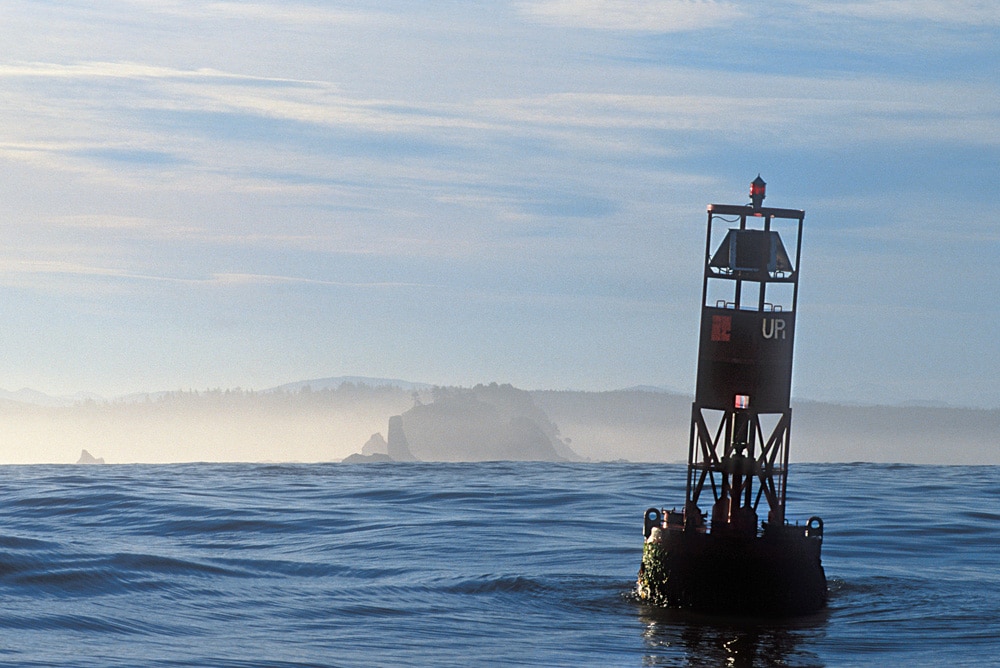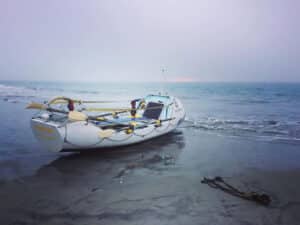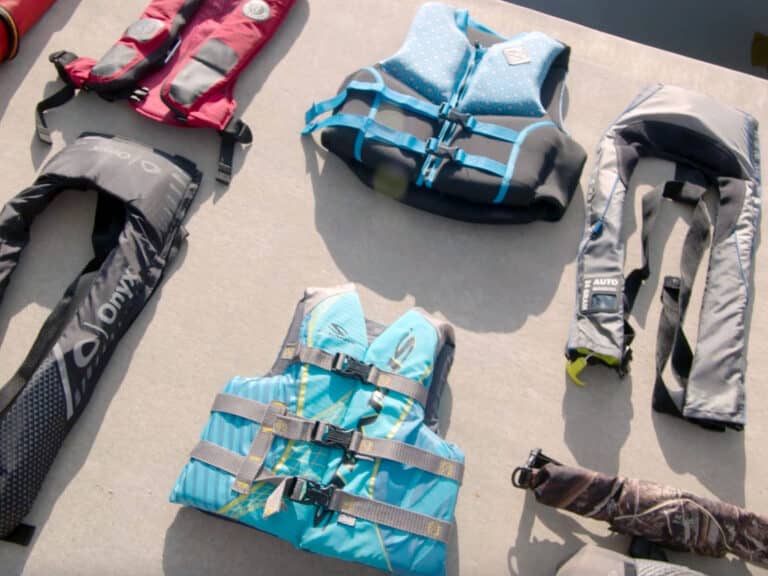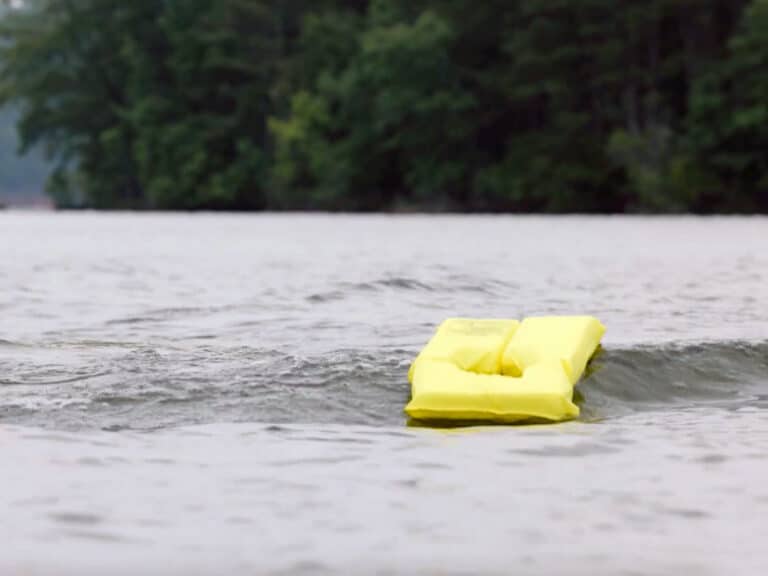
I was looking forward to a cold beer and a set of warm sheets as I swung into the narrow channel of Florida’s Longboat Key inlet. It wouldn’t be soon enough; it was nearly midnight and lightning flickered from an ominous thunderhead in a black and lowering sky. I called for an opening of the bascule bridge that sits just inside the inlet’s entrance, and as I powered between the breakwaters I could see the span’s signal turn a welcoming green — home free.
Then, just as I made a final approach, the light went red and the bridge began to lower. In the few seconds I was broadside to the current while pulling an emergency 180, the fast flood carried the boat to within a few feet of the now-lowered span. With the bow into the current and under full power, those steel bridge girders felt as if they were tickling the back of my neck as we slowly pulled clear.
It turned out another boat slipped through without calling and the bridge tender, thinking it was us, started to lower the bascule.
I narrowly averted an accident; I was lucky — this time. But over the years I learned not to count on luck, especially when dealing with inlets. Up to the point of the near miss at the bridge, I followed my usual conservative approach to the inlet. For example, while making the approach, I didn’t hug the shoreline to save a few moments and then swing through the breakwaters. I don’t do that with any inlet — much less one that has a bridge just inside the entrance. Instead, I go straight out to the sea buoy, which, depending on the inlet, could be a few hundred yards to a mile off the beach. Those sea buoys aren’t there only to mark the inlet from offshore. They are situated so an approaching vessel can scope out the inlet’s entrance and often enable one to eyeball right down the fairway.
While making the approach from the sea buoy you can scout the conditions at the inlet’s mouth as well as judge the effect of wind/ current on your vessel and visualize other traffic. Often, especially in limited visibility, I broadcast a security call on Channels 16 and 13 — the latter because sometimes commercial vessels monitor 13 and not 16 — to advise traffic of my presence (the captain of the vessel that beat me to the bridge obviously wasn’t monitoring his radio) and listen for a moment before I begin my approach.
When conditions are unfavorable — especially when a strong onshore wind opposes a fast-running ebb, the seas and breakers that often build up outside many inlets can make an approach downright dangerous if not — depending on the vessel — impossible. When the tide does change, which is never more than a few hours later, the situation at the inlet’s entrance can alter dramatically for the better. I’ve seen inlets with huge breakers (caused by offshore seas meeting an ebb tide) become pond-like shortly after the onset of the flood. The sea buoy, then, becomes a great place to hang out and wait.
It’s common sense to do a bit of homework before entering a strange, or even a familiar, inlet if facing unfamiliar conditions. Knowing the tidal picture is what first comes to mind, but it’s also important to make thorough examination of the chart — especially the surrounding depths.
Knowing there’s enough water to float your boat is only part of it. Whenever a relatively shallow patch is surrounded by deeper water, the chance of potentially boat-killing breakers exists. Take a site with 30-foot depths, for example. Sure, that’s plenty of water under the keel, but then look closely at the chart. If the surroundings are considerably deeper, there’s a possibility of breakers when the weather gets nasty.
Often, the chart will indicate breakers over the area. That’s another good argument for heading out to the sea buoy before making your approach. While there will rarely be questionable water between the sea buoy and the inlet entrance, I can think of a number of inlets where there are shallow and breaker-prone areas just off the approach channel — Barnegat in New Jersey and Ocean City in Maryland are two that immediately come to mind.
There are times, however, when we don’t have the luxury to wait for an inlet to settle down before heading in. Most modern vessels can take pretty much anything that is thrown at them, provided the skipper does not make unreasonable demands or engage in foolish maneuvers. A responsible skipper will understand the characteristics and limitations of his vessel and will act accordingly. My advice is to not make the boat’s job tougher. It’s always prudent to come in on the slow bell with just enough way to maintain steerage.
When seas are running, a slow approach allows you to adjust speed and boat position relative to the wave direction. Seas running diagonally across the inlet’s mouth can be taken somewhat off the beam, allowing the boat to be “crabbed” in safely. Usually, once inside the breakwaters, oncoming or quartering seas calm down. With seas running directly into an inlet, I will always come in at a slower speed than the seas. Often, it’s possible to “ride the back” of a sea into the inlet, all the time taking care not to exceed the speed of the wave. Outrunning the sea can result in a broach or pitch pole. Allowing the seas to pass under the keel and go on their way contributes toward maintaining boat control.
Yes, there are those of the deep-V pedal-to-the-metal set who recommend boldly blasting into an inlet regardless of the conditions. They count on horsepower and deadrise to get them home. To those who firewall throttles when others practice caution, may the force be with you — keeping in mind the old axiom (with apologies to aviators): There are old boaters and bold boaters, but there are no old bold boaters.
Preparing Boat and Crew for the Inlet Approach
The sudden transformation from an offshore run to what can be the vastly different conditions of an inlet approach is best considered at the beginning of a voyage rather than at the end. As such, I take the following steps to prepare the crew and boat:
» All crew and guests are on deck, and I’m confident all are aware of life vest and life raft locations and that they are capable of deploying the raft.
» All loose gear on deck and below has been stowed and/or secured. Particular attention is taken with dock lines or loose rope that can be washed overboard with the possibility of fouling props.
» I’ve previously determined my ETA and am aware of the destination’s tidal/current picture and bridge schedules, if need be.
» I am aware of local Coast Guard units and which commercial towers are active in the area. Commercial towers are always glad to respond to VHF calls requesting local knowledge and conditions.
» My vessel’s filters and water separators have been recently changed or examined in the event of encountering turbulent inlet conditions.
The U.S. Coast Guard is asking all boat owners and operators to help reduce fatalities, injuries, property damage, and associated healthcare costs related to recreational boating accidents by taking personal responsibility for their own safety and the safety of their passengers. Essential steps include: wearing a life jacket at all times and requiring passengers to do the same; never boating under the influence (BUI); successfully completing a boating safety course; and getting a Vessel Safety Check (VSC) annually from local U.S. Coast Guard Auxiliary, United States Power Squadrons(r), or your state boating agency’s Vessel Examiners. The U.S. Coast Guard reminds all boaters to “Boat Responsibly!” For more tips on boating safety, visit www.uscgboating.org.








